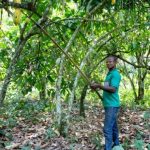Why This Ex-White house Tech Honcho Is Now engaged on Human Rights
For Nicole Wong, the White house’s ex-deputy CTO and Google’s former guidance, human rights video work is the following problem.
June 18, 2015
When musician Peter Gabriel shaped the nonprofit organization Witness in 1992 to assist activists use video for human rights work, the sector was a so much completely different place. The internet was nonetheless generally restricted to laptop labs, camcorders had been still a middle-category standing image, and YouTube wasn’t even a blip on the horizon. Now, after all, the sector is much different. Witness grew over the years, changed into a so much greater group than the one Gabriel first launched, and is discovering themselves dealing with a more recent challenge: methods to test the flood of video content material uploaded to the web.
Witness, which works on initiatives covering the whole lot from police brutality in the united states to sex trafficking in japanese Europe to defending kid squaddies in the Democratic Republic of the Congo, is likely one of the most prominent firms working at the intersection of video and human rights. The group’s work implies that they preserve close tabs on fb and YouTube, among other web sites. Their core operations center around instructing activists worldwide best practices when it comes to the usage of smartphones for photograph and video, together with helping to disseminate the footage they take.
for example, Witness is partnering with YouTube and Google on the brand new Witness Media Lab to contextualize and verify video photos. YouTube, along with Storyful, additionally launched the separate YouTube Newswire initiative on June 18 to curate first-particular person news pictures.
ultimate month, Witness introduced that former White house deputy CTO Nicole Wong joined their board of directors. ahead of her tenure within the federal government, Wong was additionally Google’s deputy general tips and prison director for products at Twitter.
after I spoke with Wong by way of cellphone, she referred to that the distance Witness—which used to be just lately featured in the big apple occasions magazine for helping to train smartphone-geared up civilians in Brazil’s favelas to movie evidence of police brutality—is all of a sudden changing. She referred to that new applied sciences similar to actual-time video streaming (cue Meerkat and Periscope) along with the use of big information utilized to video analysis imply large challenges for her group.
“There’s energy where anyone in a confrontation with a police officer is able to level a camera and say that it’s not just me here, it’s 5,000 people observing with me,” Wong defined. “That’s a major software from a reside-streaming standpoint.”
The Ethics of reside-Streaming
given that becoming a member of Witness, one of the vital big concerns Wong and her fellow board contributors were coping with is determining the ethics of live-streaming. although live-streaming video has been part of the activist world for reasonably a while—quick firm has up to now coated the live-streams of Occupy Wall street amongst other tasks—real-time video has required important technical and logistical talents on the a part of the cameraperson up to now. products and services like Meerkat and Periscope upend the equation by means of making real-time broadcasts to tons of or hundreds of people as straightforward as sending a tweet.
“What happens if something very violent happens in a live-movement, and there’s a baby gazing?” Wong requested me. “How do you protect them from something violent that happens abruptly? What if you happen to take video from a bullying experience or a protest and give protection to the privateness of bystanders who occur to be on digital camera?”
There are additionally extra severe live-streaming concerns that proceed to challenge Witness. In circumstances of domestic abuse, the group issues about defending both the physical area of a home and youngsters throughout the place of dwelling. Equally worryingly, repressive regimes might use are living-streams (augmented with the aid of large knowledge and laptop finding out initiatives that automatically recognize people in video) to establish protesters at rallies and confrontations.
“It’s attention-grabbing because I understand that when Witness was born and Peter Gabriel was once so impressed by means of video technology to movie Rodney King,” she introduced. “We’re nonetheless right here in this second, however the tech scene has changed. Witness in the beginning used to be getting this tech into the fingers of people that can use it, but now everyone has it.”
Video And Verification
every other challenge for Wong and Witness is how so much more uncomplicated it is now to now not best shoot however share videos. In Brazil, where Witness has accomplished a lot to capture documentation of police brutality, application director Sam Gregory informed me WhatsApp is automatically used to share videos.
the rise of WhatsApp and services like Viber and QQ, which can be used on a small scale in the U.S. however are completely huge world wide as a result of they enable customers to save cash on expensive SMS messages, poses a challenge to any individual looking to put videos in context. as a result of content material is shared privately and doesn’t go to a massive searchable reservoir just like YouTube’s archives or the Twitter feed, the opportunity for movies being taken out of context is an important difficulty.
“there are many verification preparations,” Gregory explained, but they have an inclination to involve quite a few detective work, contextual understanding on the a part of the verifier, and foreign-language talents. For news businesses and non-governmental companies looking to fast make sense of breaking information situations, this can also be difficult. Verifying photos shared in this way is a brand new logistical problem.
altering Tech
sadly for the arena, there’s no scarcity of human rights violations to be filmed. as a result of products and services like YouTube have turn into ingrained into world culture, and accomplishing an enormous transnational target market is as easing as clicking “submit” on fb or Twitter, video will preserve enjoying the most important role in getting the information out from the U.S. to Zimbabwe.
this means working out context is of equal significance. Wong, whose position at Google included overseeing the acquisition of YouTube, instructed the story of how she navigated YouTube’s terms of services and products violations in the case of Wael Abbas, an Egyptian activist who used the video web site to report incidents of police brutality and mob violence.
“YouTube on the time had overall pointers—no pornography, no copyright violations, no extreme graphic violence. I used to be deputy basic information, and it came to our workforce an awfully photo video of a man being crushed terribly in a room. The crew advised us to take it down because of phrases of service violations, however then others together with Witness instructed us it was Wael Abbas’, and showed an Egyptian man being beaten in an interrogation room. It was put up with out a context, so we didn’t understand what it was,” she delivered.
within the meantime, are living-streams from protests will show up on Periscope, and grainy photos of civilian massacres can be shared among expats on WhatsApp. The challenge, for Witness and others, shall be simply the way to make experience of that flood.
replace: this article has been up to date to mirror the launch of the YouTube Newswire and Witness Media Lab on June 18.
quick company , read Full Story
(100)









